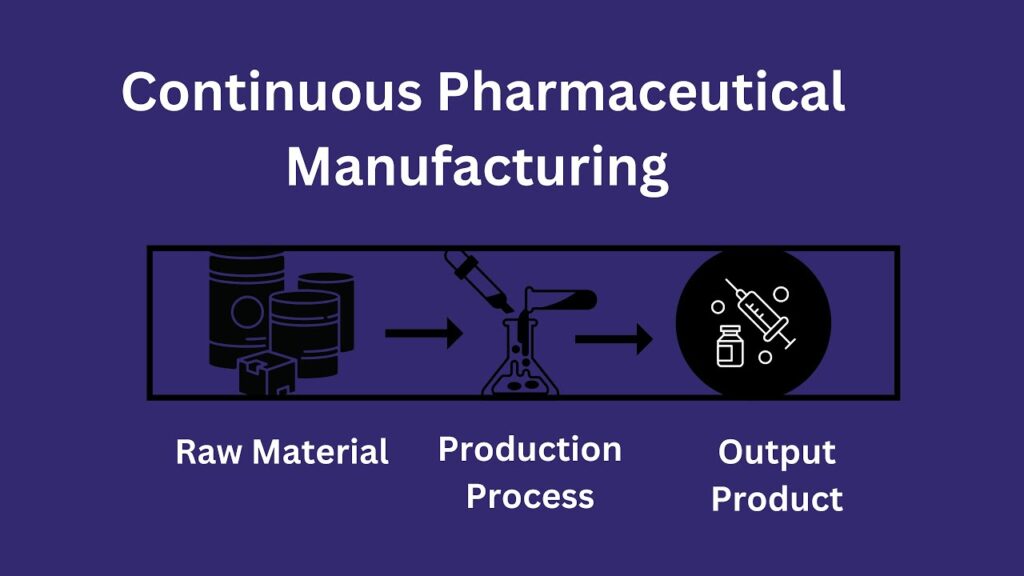Understanding Pharmaceutical Continuous Manufacturing
In the ever-evolving landscape of pharmaceuticals, the need for enhanced efficiency, flexibility, and quality control has led to a paradigm shift in drug manufacturing processes. One groundbreaking approach gaining prominence is Pharmaceutical Continuous Manufacturing (PCM). This innovative method replaces traditional batch processing with a continuous, streamlined production model, offering numerous advantages in terms of speed, cost-effectiveness, and product quality.
Pharmaceutical Continuous Manufacturing involves the uninterrupted production of drugs, allowing for a seamless flow of raw materials through various stages until the final product is obtained. Unlike the traditional batch manufacturing method, which involves starting and stopping processes for each batch, continuous manufacturing ensures a constant and uninterrupted flow of materials, reducing the overall production time.
Data Bridge Market Research analyses the Pharmaceutical Continuous Manufacturing market to account to USD 4240.69 million by 2028 and will grow at a CAGR of 8.16% in the above mentioned forecast period.
Advantages of Pharmaceutical Continuous Manufacturing
- Increased Efficiency: Continuous Manufacturing eliminates downtime between batches, significantly reducing the time it takes to produce pharmaceuticals. This leads to higher overall production efficiency and shorter time-to-market for new drugs.
- Cost Savings: The continuous nature of PCM minimizes the need for large inventories of raw materials and finished products. This reduction in inventory costs, coupled with increased efficiency, results in substantial cost savings for pharmaceutical companies.
- Improved Quality Control: Continuous Manufacturing allows for real-time monitoring and control of the production process. This enhanced visibility enables prompt identification and correction of any deviations, ensuring consistent and high-quality pharmaceutical products.
- Flexibility and Scalability: PCM provides greater flexibility in adjusting production levels to meet market demands. Additionally, the modular nature of continuous manufacturing systems allows for easy scalability, accommodating changes in production volumes without significant modifications.
- Reduced Environmental Impact: The continuous process minimizes waste and energy consumption compared to traditional batch manufacturing. This eco-friendly approach aligns with the growing emphasis on sustainable practices within the pharmaceutical industry.
Challenges and Solutions: Pharmaceutical Continuous Manufacturing
While Pharmaceutical Continuous Manufacturing offers substantial benefits, it also presents unique challenges that must be addressed for widespread adoption.
- Regulatory Hurdles: Adherence to stringent regulatory requirements is a primary concern. Collaborative efforts between pharmaceutical companies and regulatory bodies are essential to establish standardized guidelines for continuous manufacturing processes.
- Technology Integration: Implementing continuous manufacturing may require a significant overhaul of existing infrastructure. Companies must invest in cutting-edge technologies and provide adequate training for personnel to ensure a smooth transition.
- Cultural Shift: Shifting from a traditional batch manufacturing mindset to a continuous manufacturing approach may pose resistance within the industry. Education and awareness programs are crucial to facilitate this cultural shift and encourage acceptance of the new methodology.
Real-world Applications of Pharmaceutical Continuous Manufacturing
Several pharmaceutical companies have successfully embraced continuous manufacturing, demonstrating its feasibility and effectiveness across various drug types.
- Tablets and Capsules: Continuous Manufacturing is well-suited for the production of tablets and capsules, ensuring consistent drug quality and dosage. The pharmaceutical industry has witnessed successful implementations in the continuous tablet manufacturing process.
- Biologics and APIs: The production of biologics and Active Pharmaceutical Ingredients (APIs) has also benefited from continuous manufacturing. This approach allows for precise control over complex biochemical processes, ensuring the quality and integrity of the final products.
- Personalized Medicine: Continuous Manufacturing facilitates the production of small batches and personalized medicine, aligning with the industry’s shift towards more targeted and patient-specific treatments.
What is batch vs Pharmaceutical Continuous Manufacturing?
The manufacturing processes in the pharmaceutical industry play a crucial role in determining the efficiency, cost-effectiveness, and quality of the final products. Traditionally, pharmaceuticals have been produced using a batch manufacturing approach. However, in recent years, there has been a shift towards continuous manufacturing as a more innovative and efficient alternative. Let’s delve into the key differences between batch and continuous pharmaceutical manufacturing.
Batch Manufacturing:
1. Intermittent Processing:
- Batch manufacturing involves the production of a finite quantity of a drug during a specific time frame.
- Each batch is produced separately, with distinct start and stop times for each phase of the manufacturing process.
2. Time Gaps Between Batches:
- There are pauses or time gaps between the completion of one batch and the initiation of the next.
- Cleaning and equipment setup are required before starting a new batch.
3. Resource Intensive:
- Requires significant resources, including time and manpower, for cleaning, setup, and validation processes between batches.
- Large inventory of raw materials and finished products may be necessary.
4. Quality Control Challenges:
- Quality control is conducted after each batch is produced, making it challenging to identify and address issues in real-time.
- Variability may exist between batches due to differences in processing conditions.
5. Flexibility:
- Limited flexibility in adjusting production volumes quickly in response to market demands.
- Changes in production require adjusting equipment and recalibrating processes.
Continuous Manufacturing:
1. Uninterrupted Production:
- In continuous manufacturing, the production process is ongoing and uninterrupted.
- Raw materials continuously flow through the various stages of production until the final product is obtained.
2. Reduced Downtime:
- Significantly reduces downtime between batches, leading to a continuous flow of materials.
- Cleaning and setup are minimized, contributing to increased efficiency.
3. Cost-Effectiveness:
- Offers cost savings by reducing the need for large inventories of raw materials and finished products.
- Continuous processes result in less waste and energy consumption, contributing to cost-effectiveness.
4. Real-time Quality Control:
- Enables real-time monitoring and control of the production process, allowing for immediate identification and correction of deviations.
- Consistent product quality is maintained throughout the production.
5. Flexibility and Scalability:
- Greater flexibility in adjusting production volumes to meet market demands.
- Modular design allows for easy scalability without significant modifications to the manufacturing system.
6. Technological Integration:
- Embraces advanced technologies, such as process analytical technology (PAT) and automation, for enhanced control and precision.
The Future Outlook: Pharmaceutical Continuous Manufacturing
Pharmaceutical Continuous Manufacturing is poised to become the standard in drug production, driving industry-wide transformation. As technology continues to advance and regulatory frameworks adapt, the adoption of continuous manufacturing will likely accelerate.
- Digital Integration: The integration of digital technologies, such as Artificial Intelligence (AI) and data analytics, will further enhance the efficiency and precision of continuous manufacturing processes.
- Industry Collaboration: Increased collaboration between pharmaceutical companies, regulatory bodies, and technology providers will play a pivotal role in establishing standardized practices and overcoming challenges associated with continuous manufacturing.
- Global Adoption: As awareness grows and the benefits become more apparent, continuous manufacturing will see widespread adoption across the globe. This shift will reshape the pharmaceutical landscape, offering a more sustainable and responsive approach to drug production.
Read More @ https://www.databridgemarketresearch.com/reports/global-pharmaceutical-continuous-manufacturing-market



